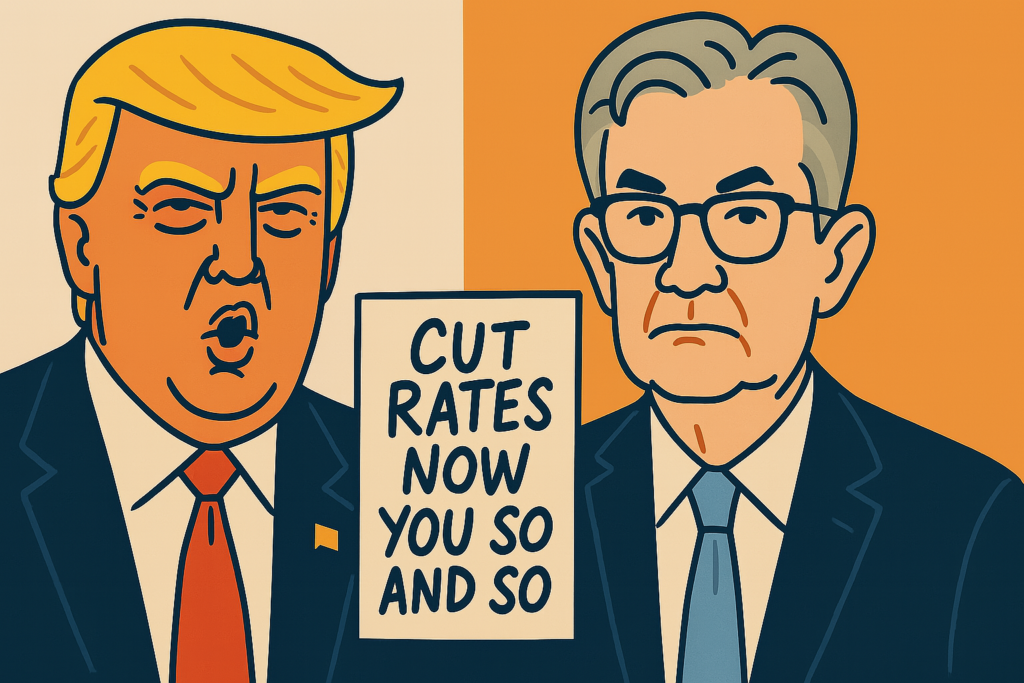It is perhaps obvious that Personal Consumption Expenditure (PCE) – or consumer demand – is critical to US economic growth. PCE growth has accounted for over 80% of US real GDP growth since end-2013 (see Figure 7), thanks to its relative size (nearly 70% of GDP) and the fact that PCE is the only demand sub-component which has positively contributed to GDP growth every quarter since 2010.
PCE amounted to about $14 trn in 2018, equivalent to China’s annual GDP. US spending on services alone equates to about $9.1 trn – the combined GDP of Japan and Germany. Every day US consumers on average spend $38bn, roughly the size of Tunisia’s annual GDP.
If one was to focus on just one macro variable, it should probably be US PCE in our view. It is certainly central to Federal Reserve monetary policy decisions and fiscal policies.
And yet PCE data, which the Bureau of Economic Analysis releases both monthly and quarterly, receive very little coverage compared to say non-farm payrolls figures or PMI numbers. Monthly US retail sales data, published two weeks before PCE figures, are a useful but imperfect lead indicator of the broader measure of consumer demand.
The recovery in real PCE growth in Q2 to 4.6% qoq (seasonally-adjusted annualised) was impressive but benefitted from weak growth in both Q4 2018 (1.4%) and Q1 2019 (1.1%). Indeed, month-on-month PCE growth gradually slowed from 0.8% in March to just 0.3% in July and 0.1% in August, with expenditure on services contracting in August.
Moreover, the recent fall in US consumer confidence, slowdown in income and wage growth and jitters in US equity markets – a theme we will explore in our next report –suggest that PCE growth remained weak in September and thus slowed materially in Q3.
At the same time, in the past 18 months fixed investment and government spending growth has been in line with GDP growth while inventories and net exports have been a drag.
We conclude that US GDP growth in Q3 may have slowed to below 1.8% qoq – the current AtlantaFed GDP Now estimate – from 2.0% qoq in Q2, putting the Federal Reserve under pressure to cut its policy rate 25bp again before year-end.
If one was to focus on just one macro variable, it should probably be US PCE
It is perhaps an obvious statement that Personal Consumption Expenditure (PCE) – also referred to as household/consumer spending/demand – is critical to US economic growth. PCE growth has accounted for over 80% of US GDP growth since end-2013, thanks to its relative size (nearly 70% of GDP) and the fact that PCE is the only demand sub-component which has positively contributed to GDP growth every quarter since 2010.
If one was to focus on just one macro variable, it should probably be US PCE in our view. It is certainly one which is central to the Federal Reserve’s monetary policy decisions and which drives the US government’s fiscal policies.
And yet PCE data, which the US Bureau of Economic Analysis (BEA) releases both monthly and quarterly as part of national accounts (i.e. GDP) data, receive very little coverage in the financial press compared to say non-farm payrolls figures or PMI numbers[1]. This is in part due to the US Census Bureau publishing advanced monthly US retail sales data roughly two weeks before PCE figures are released.
However, retail sales data are an imperfect leading indicator of PCE, as we detail below, both because of their more limited scope (they account for only 30% of GDP) and differences in coverage.
US Personal Consumption Expenditure (PCE) key to US economic growth story
PCE amounted to about $14 trn in 2018, which is equivalent to China’s annual GDP (see Figure 1). Spending on services alone amounts to about $9.1 trn, which equates to the combined GDP of Japan and Germany, respectively the third and fourth largest economies in the world. Every day US consumers on average spend $38bn, roughly the size of Tunisia’s annual GDP.
PCE accounts for about 68% of (nominal) US GDP – a ratio which has been broadly stable since 2011 and which is twice as large as the aggregate of fixed investment and government spending, which each account for about 17% of US GDP (see Figure 2).
Moreover, PCE is the only demand sub-component which has risen quarter-on-quarter in real terms every quarter since Q4 2009 (see Figure 3).
Between 2010 and 2017, on average, the quarter-on-quarter seasonally adjusted annualised rate (SAAR) of growth in PCE (+2.5%) was admittedly less than half the growth rate recorded by fixed investment (+5.6%) and was weaker than growth in exports of goods and service (+3.9%) – see Figure 4. However, PCE growth over this period was far more stable (see Figure 3) and, in the past six quarters, average PCE growth (+2.72%) has slightly exceeded fixed investment growth (+2.65%) and way exceeded growth in exports of goods and services (+0.05%) – see Figure 5.
While US export growth has collapsed in the past 18 months, partly as a result of slowing global trade and GDP growth and the US-China trade war, growth in government spending – which has been on the ascendancy since 2015 – has accelerated to a quarterly average of +2.3% (see Figures 3 & 5). US President Trump has arguably loosened fiscal policy in a bid to compensate for the hit to exports’ contribution to headline US growth.
Personal consumption accounts for whopping 80% of US real GDP growth
As a result of its relative size and consistently strong growth rates, PCE has been the largest demand-side contributor to real GDP growth every quarter since Q4 2013 (see Figure 6).
In the past six years, PCE growth has on average contributed two percentage points to average quarter-on-quarter seasonally-adjusted annualised GDP growth of 2.5% – more than three times as much as fixed investment growth and nine times as much as government spending (see Figure 7). The change in inventories and net exports of goods and services have on average detracted from headline GDP growth.
Put differently, PCE growth has accounted for over 80% of US GDP growth since end-2013. This ratio dropped to only 25% in Q1 2019, due in part to PCE growth slowing to a six-year low of just of 1.1% qoq SAAR, but jumped to 150% in Q2 thanks to a rebound in PCE growth to a six-quarter high of 4.6% qoq SAAR (see Figure 8). Therefore, on average in the first half of 2019, PCE growth accounted for 88% of US economic growth – a ratio in line with recent history (see dotted line in Figure 8). Importantly, this suggests that US consumers are willing and able to smooth their spending from one quarter to another.
To elaborate on a common metaphor, PCE growth remains by far the largest engine of US growth and this engine has run at a regular and decent speed most of the time. In comparison, the fixed investment and government spending engines are far smaller although engine speeds have in the past 18 months been comparable to overall GDP growth. The inventory and net export engines are dead weights and slowing US GDP growth.
Sharp growth recovery in PCE in Q2 2019 masks underlying loss of momentum
The recovery in PCE growth in Q2 to 4.6% qoq SAAR was at first glance impressive (see Figures 3 & 9).
- The 6.5% increase in spending on non-durables was the fastest growth rate in 16 years. As a result, expenditure on non-durables single-handedly accounted for nearly 30% of PCE’s contribution to GDP growth and 0.9 percentage points (or 43%) to overall GDP growth of 2.0%. This was largely due to a 14.5% qoq SAAR of growth in expenditure on clothing and footwear – the fastest rate of growth in two decades. To put it in context, expenditure on clothing and footwear alone added 0.25 percentage points to headline GDP growth in Q2.
- The quarter-on-quarter SAAR of growth in expenditure on durable goods hit a five-year high of 13% in Q2 although this was largely due to a 16% increase in volatile vehicle sales. As the Federal Reserve noted in its 31st July policy meeting minutes “Real consumer expenditures rose briskly in the second quarter after a sluggish gain in the first quarter, supported in part by a robust pace of light motor vehicle sales in May and June”.
- Growth in expenditure on services growth doubled to 2.9% qoq SAAR from the average recorded in the two previous quarters.
However, this recovery in Q2 came on the back of weak PCE growth in both Q4 2018 (1.4%) and Q1 2019 (1.1%) and therefore benefitted from favourable base effects. Indeed, monthly data show that month-on-month growth in PCE gradually slowed from 0.8% in March to just 0.3% in July and 0.1% in August, with expenditure on services contracting in August (see Figure 10).
The Federal Reserve had already noted in its 31st July policy meeting minutes that “real PCE rose more slowly in June than in the first five months of the year, suggesting some deceleration in consumer spending going into the third quarter”. We would argue that this slowdown in US consumer demand was central to the Federal Reserve’s decision to cut its policy rate 25bp in July to 2.00-2.25%.
Dip in consumer confidence, wage growth and US equities point to further PCE slowdown
Moreover, the dip in the US Conference Board consumer confidence index to 125.1 in September from 135.8 in July, the recent slowdown in income and wage growth and jitters in US equity markets – a theme we will explore in our next report – suggest that PCE growth remained weak in September and thus slowed materially in Q3. We estimate that even if real PCE growth rebounded to 0.3% mom in September (and assuming no revisions to previous data), quarter-on-quarter seasonally adjusted annualised growth in PCE will have slowed to 2.7% in Q3 from 4.6% in Q2. This would imply that PCE, which contributed three percentage points to GDP growth in Q2, contributed “only” 1.9 percentage points in Q3.
At the same time, as noted above, growth in fixed investment and government spending has in the past 18 months been comparable to overall GDP growth while inventories and net exports have been a drag. We conclude that GDP growth may have slowed in Q3 to below 1.8% qoq – the current AtlantaFed GDP Now estimate – from 2.0% qoq in Q2, putting the Federal Reserve under pressure to cut its policy rate 25bp a third time before year-end.
The BEA will release its advance estimate of Q3 GDP data on 30th October, the same day the Federal Reserve is due to conclude its two-day policy meeting, but it is fair to assume that FOMC members will have access to this GDP number before they vote on whether to cut the policy rate.
Retail sales – a useful if imperfect lead indicator of personal consumption expenditure
The US Bureau of Economic Analysis is due to publish personal expenditure and income data for September on 31st October but retail sales data, which the US Census Bureau will publish on 16th October, may provide an early indication of how PCE fared.[1]
The volume of US retail sales has historically correlated closely with PCE and is thus a useful if imperfect lead indicator. Monthly data for the past 20 years show a high degree of correlation (R-squared of 0.77) between the growth rate of retail sales volumes and the growth rate in personal expenditure on goods, with no notable outliers (see Figure 11). Intuitively this makes sense as retail sales measure the sale of durable and non-durable goods (including food) by domestic retail establishments (including on-line) to domestic households and tourists.
However, unlike the broader measure of PCE, retail sales exclude domestic consumers’ spending at home and abroad on utilities (electricity, gas, water) and services (including housing, health, education, transportation, recreation and entertainment). Retail sales, however, include sales of goods to tourists. This difference in coverage between retail sales and PCE results in a material difference in the magnitude of both measures. In 2018, US PCE amounted to about $14 trn (or 68% of GDP), with expenditure on goods accounting for about $4.4trn, but total US retail sales amounted to “only” $6 trn (30% of GDP). Please see Retail sales to the rescue, 29 April 2019, for a more detailed discussion.
Moreover, while the Bureau of Economic Analysis releases both nominal and constant-price (i.e. inflation-adjusted or real) PCE data, the US Census Bureau only releases nominal retail sales values. These need to be deflated to gain “real” retail sales data comparable to “real” PCE figures, as we do in Figure 11.
[1] PCE inflation – one of the Federal Reserve’s key measures of consumer price inflation – is tracked closely by analysts and the financial press.
[2] Advance monthly retail sales data are typically published a fortnight before monthly PCE data.

















